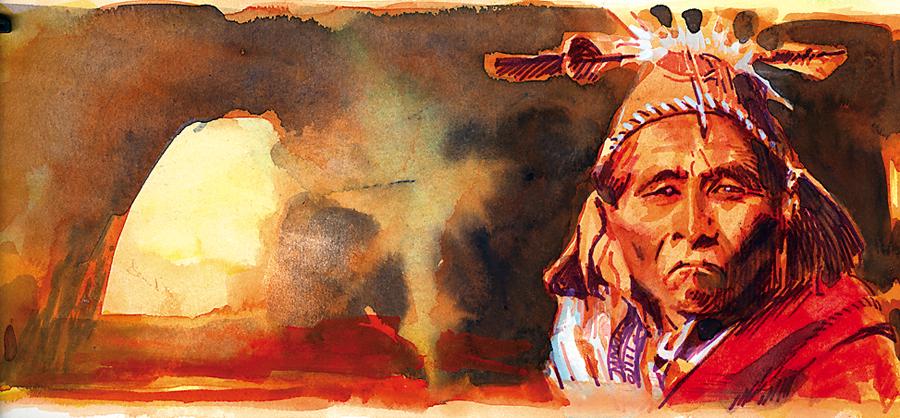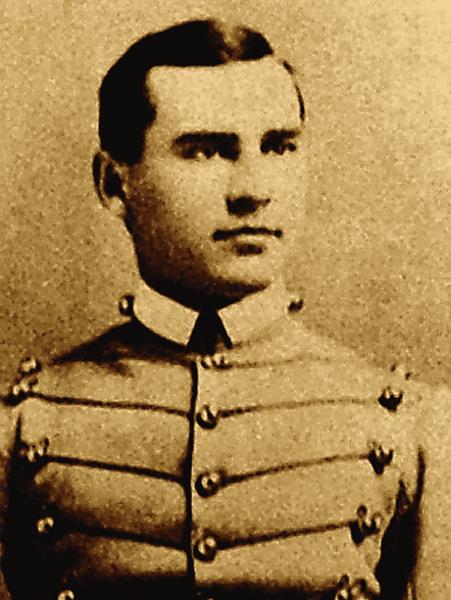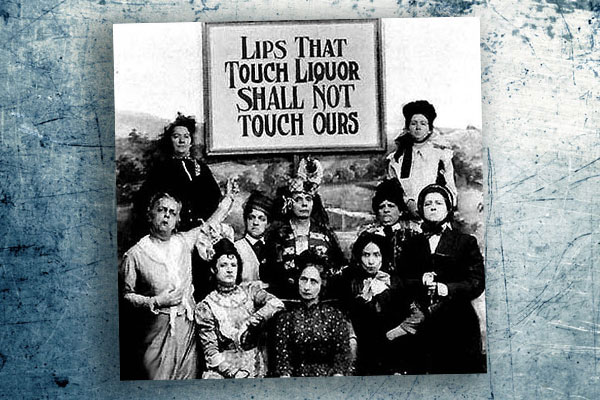 July 17 1882
July 17 1882
Apache leader Na-ti-o-tish positions his warriors along a narrow gorge eight miles north of the Mogollon Rim in east central Arizona. They have built rifle pits and stacked rock wings adjacent to large pine trees, awaiting a small troop of soldiers (55 men) who will pass, single file on horseback, directly below them.
Stopping within three-quarters of a mile from the chasm, the first officer on the scene, Col. Adna Chaffee, sends 30 scouts on foot to the west to get behind the canyon, as a precautionary move. The troopers and the remaining scouts move into a skirmish line along the south rim of the canyon. As they do, one of the Indian scouts discerns the hostiles’ position on the north side of Big Dry Fork. Col. Chaffee orders a feint to the center, then sends out two flanking movements: one to the west and one to the east of the Apaches’ position.
More troops arrive, but before any of them can get into position, a nervous “recruit lets his piece go [fires his weapon],” which opens up the fight. Both sides, some 700 yards apart, begin firing.
The westside flanking troops led by Capt. Lemuel Abbott run headlong into an Apache force attempting the same thing. Both sides open fire, and a hailstorm of lead fills the draw.
Chief of Scouts Al Sieber and his crew appear on the opposite rim just as the Abbott fight ensues. The Apache pony guards cock their heads toward the firing, and Sieber and another soldier “wipe them out.”
Scooping up the pony herd and stolen stock, Sieber and Lt. Thomas Cruse lead an assault into the rear of the hostiles’ position, firing as they run.
On the ridge, Lt. George Morgan, in his first major engagement with the Apaches, fires several times before finally hitting someone, yelling, “I got him! I got him!” as he exposes himself to enemy fire. An Apache bullet rips through his arm and into his body.
Hearing Sgt. Daniel Conn of Troop E yell orders to his men, some of the hostiles who had been scouts before the Cibecue fight (see time line, opposite page) recognize his voice. He had served pork to them on ration day; they know him as “Hog Sergeant.”
The hostiles taunt him, yelling “Aaaaaiiah! Coche Sergeant!” Conn yells something back, and an Apache bullet hits the sergeant in the throat, “opening a hole as big as a silver dollar through a size-thirteen neck,” reports Lt. Thomas Cruse.
The day is expiring, and the shadows lengthen as various elements of the attacking troops form a line to push the Indians back toward the camp. Seeing this, Na-ti-o-tish harangues his men, ordering them to fight to the last man.
Lieutenant Cruse watches Sieber shoot and kill three renegades as they run toward the edge of the canyon. Sieber keeps on running and rolling, each time coming up firing. When Cruse calls up his men and attempts a charge into the Apache position, Sieber and Capt. Adam Kramer’s troops cover them with fire.
As Cruse advances, an Apache jumps up within two yards of the lieutenant and fires, just missing Cruse and hitting Pvt. Joseph McLernon, who falls mortally wounded. Cruse recovers and drags McLernon back
to a ravine.
The hostiles make one more heroic attempt to break out to the north, but they are repulsed by the soldiers. As darkness envelopes the battlefield, a stalemate ensues, with both sides less than 50 yards apart. A severe hailstorm sweeps across the rim, pelting and soaking everything and everybody. The dead are covered in an icy shroud, “four or five inches deep.”
The last major Apache battle on U.S. soil is over.
A Tactical Bronco Blunder
In the parlance of the times, Apaches who escape the San Carlos Reservation are called “Bronco Apaches.” Na-ti-o-tish, neither a chief nor a war leader, leads about 54 Bronco Apaches—including women and children—on a killing and raiding spree, no doubt angered by the death of their medicine man (see time line).
After plundering through Pleasant Valley for more than a week, they are about to turn east at the top of the Mogollon Rim and head back to the reservation when they spot pursuing troops at General Springs. They count 50 white horse troops on their trail.
What the Apaches fail to see are the numerous brown horse troops, some 200 men in all, coming up behind from four different forts (see above map).
Na’s warriors build rifle pits at General Springs, but for some reason, abandon them and travel eight more miles to Big Dry Wash to make their stand.
Some historians speculate that the Indians may have been drinking (liquor bottles are later found along the
trail) and perhaps that leads to their miscalculating the strength of the
U.S. troops.
Apache Time Line
In the spring of 1881, Noch-ay-del-klinne, a White Mountain Apache medicine man, taught the Apaches a new dance. The performers arranged themselves like the spokes of a wheel, all facing inward, while the medicine man stood in the hub and sprinkled them with the sacred hoddentin (from the pollen of the tule) as they circled around him.
As Apaches flock to these dances, held near Cibecue, Arizona, reservation agents worry that Noch-ay-del-klinne is actually preaching to the others that their chiefs will return from the dead and the white man will disappear. To halt the medicine man’s influence, Joseph Capron Tiffany, the agent at the San Carlos Reservation, sends his Indian police to arrest the prophet, but they come back empty-handed, grumbling about white aggression. The enlisted scouts at Fort Apache demand passes to attend the dances, and they, too, return as converts.
August 14, 1881
Agent Tiffany sends a demand to Col. Eugene Asa Carr, the commander at Fort Apache: “I want [the Apache medicine man] arrested or killed or both.”
August 29, 1881
Colonel Carr sets out from Fort Apache with 117 men and 23 Apache scouts. Arriving late in the day in Cibecue, a 75-mile ride, Carr and his men arrest Noch-ay-del-klinne without incident, but his assembled converts follow Carr into camp, a mile from the arrest site. After several confrontations, a fight breaks out and Capt. Edward C. Hentig is shot point-blank in the heart, killing him instantly.
A bugler of Troop D shoots the prophet three times in the head (Carr had threatened to kill him if there was any trouble). The Indian scouts defect. In the ensuing gunfight, eight soldiers and 18 Apaches are killed.
Vastly outnumbered, Carr and his command slip away by night and make it back to Fort Apache. Roving bands of Apaches sweep the area, killing soldiers and civilians wherever they find them.
Geronimo, living peacefully at San Carlos, is nervous. Twenty-two companies from California and New Mexico have descended on the reservation, where no soldiers have been on post since John Clum kicked them out in 1876.
September 25, 1881
Two small White Mountain bands come to San Carlos to surrender. Camping near Geronimo, the authorities decide to rearrest Chiefs Bonito and George.
September 30, 1881
Three companies of troops advance on the sub-agency where Geronimo and his band receive rations. Spooked, they jump the reservation and leave a trail of blood all the way into Mexico.
April 18, 1882
From their stronghold in the Sierra Madre Mountains in Mexico, Geronimo, leading some 70 warriors, crosses the line and raids the reservation, toward San Carlos, killing chief of police Albert Sterling and Apache policeman Sagotal.
Geronimo “liberates” (some question whether the Apaches go voluntarily) a band of kinsmen and heads up the Gila River. His warriors kill anyone they encounter; the death toll reaches 50 as they make a deadly sweep into Mexico. In what is known as the Tupper Battle, troops led by Al Sieber and his scouts catch up to the Apaches just across the line and attack them, killing 14 before the rest escape, only to be attacked by Mexican troops, who kill another 78 and capture 33 women and children.
July 6, 1882
On the reservation, restless Cibecue insurgents find a leader in Na-ti-o-tish. They ambush the new San Carlos chief of police, John “Cibecue Charley” Colvig, and three Indian policemen, killing them all.
Gathering adherents along the Gila, the renegades number about 54 fighting men as the war party sweeps north toward the Tonto Basin, killing and stealing everything they can.
Al Sieber’s Deadly Efficiency
An immigrant from Germany, Sieber joined the army just after his 18th birthday, fighting at Gettysburg with the First Minnesota. On the second day of the battle, he was severely wounded in a bayonet charge.
Ultimately discharged, he wandered West, landing in Prescott, Arizona, where he distinguished himself in several Indian fights. He rejoined the army and rose to the rank of chief of scouts. He and his men just returned from killing 14 Apaches during the Tupper Battle (see time line) prior to the Big Dry Wash fight.
Describing the opinion of the time, Dan Thrapp, Sieber’s biographer, wrote, “Killing Indians was the dirty climax of the exciting sport of hunting them.” This sentiment applied to the Apache warrior side of the equation as well.
Many modern day readers are puzzled and disturbed by the Apache scouts hunting their own kind, but their warrior class, perhaps even more so than the “Americans,” loved the exciting sport of hunting. The “dirty climax” just came with the territory.
Before the Big Dry Wash fight, Col. Evans and Lt. Morgan’s scouts advised them that the hostiles were too far ahead. “Sieber, in his abrupt way, started them along pronto,” Morgan wrote.
Thrapp credited Sieber with dispatching almost half of the Apache casualties at Big Dry Wash.
Aftermath: Odds & Ends
Lieutenant George Morgan survived his wound, as “the slug had only gone around his ribs and lodged in the back muscles.” Sergeant Daniel Conn (“Hog Sergeant”) survived his throat wound, joking, “Sure, I heard the Cap’n say I was kilt, but I knew I was not. I was only speechless!” Private Joseph McLernon died within an hour.
One of the Apache scouts, Pvt. Pete (Hoski-ta-go-lothe) was killed in the battle. An account, told years later by C.P. Wingfield, described that deadly day for Pete, who “saw two of his brothers and his father with the Indians. He threw his gun down and started to run to his folks. Sieber told him to halt. He did not heed him. Sieber raised his rifle and fired, shooting him in the back of the head.”
Shielded by the dark night, the hostiles stole away from their camp, leaving behind everything they owned, including “73 head of stock, 24 saddles, blankets, baskets, cooking utensils,” reported Capt. Adna Chaffee.
The morning after the battle, patrols scoured the area for the dead and wounded (accounts ranged from 16-22 dead bodies found). Lieutenant Frederick G. Hodgson and his men discovered a young Apache woman, badly wounded and shielding her baby, who fired on them three times. Troops captured her, amputating her shattered leg, which she endured without a murmur. She, along with her child, were transported back to Fort Apache where she recovered.
Recommended: Al Sieber: Chief of Scouts by Dan L. Thrapp, published by University of Oklahoma Press; Apache Days and After by Thomas Cruse, published by University of Nebraska Press.
Photo Gallery
“Second Lieut. 6th US Cavalry—Gallantly charged hostile indians, and with his carbine compelled a party of them to keep under cover of their breastworks, thus being enabled to recover a severely wounded soldier.”
Lieutenant Thomas Cruse allegedly appears in the above photo taken in October of 1880 at El Paso, Texas. This large group of Apache scouts participated in the rundown of Victorio’s band in old Mexico. Although taken two years earlier, some of these scouts probably fought at Big Dry Wash.
– Courtesy National Archives –
“First Sergeant Co. D 3rd US Cavalry—Gallantry in action.”
“Second Lieut. 3rd US Cavalry—Gallantly held his ground at a critical moment and fired upon the advancing enemy (hostile indians) until he was disabled by a shot.”
– Illustrations by Bob Boze Bell –
“First Lieut. 6th US Cavalry—Rallied his command and led it in the advance against the enemy’s fortified position.”














